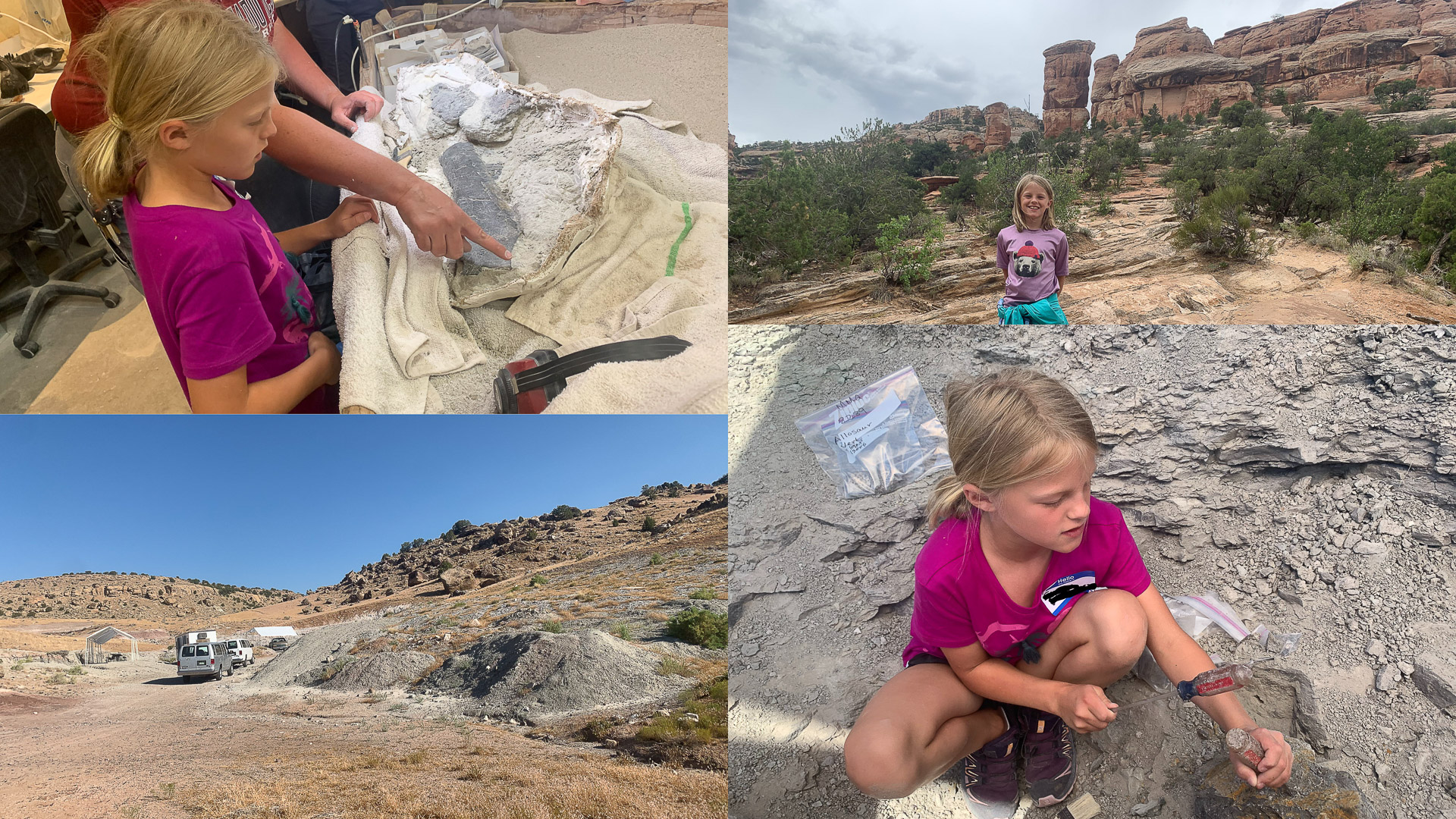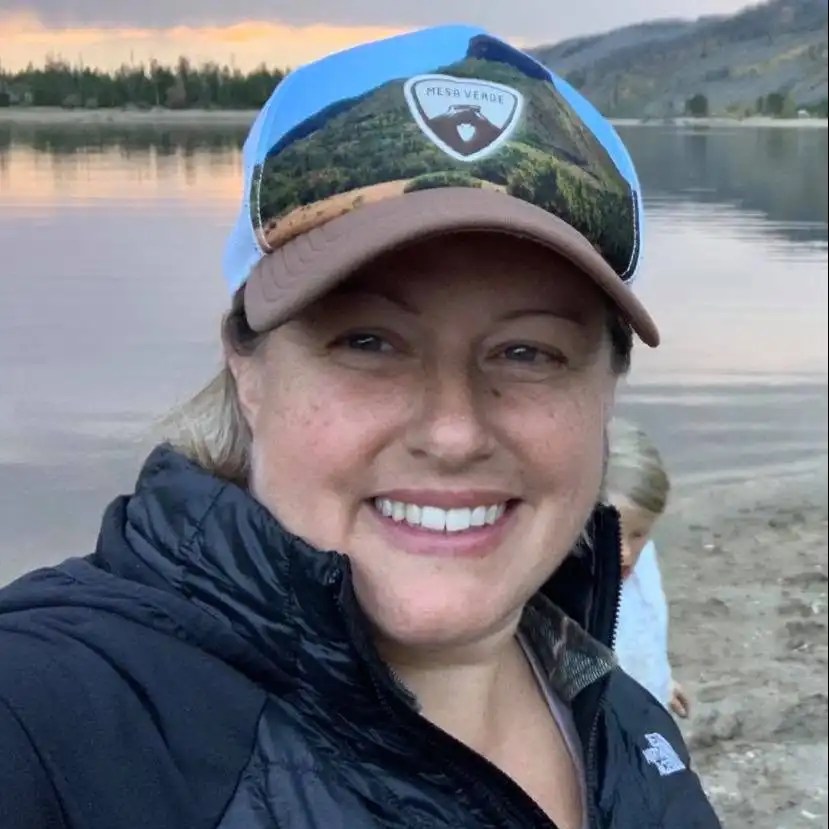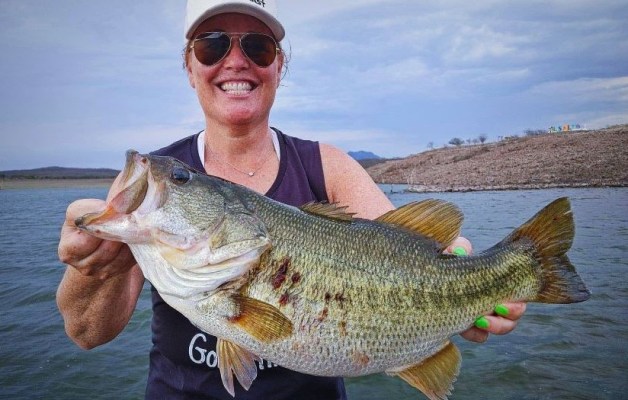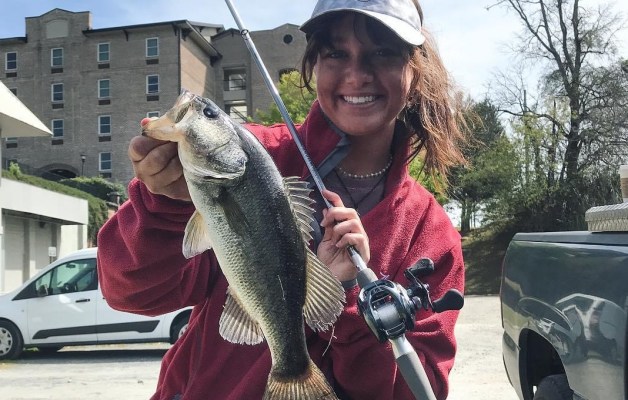
Colorado is home to some of the most extensive dinosaur history in all of the United States. At Dinosaur Ridge, in Morrison, Colo., you can find the No. 1 tracksite in North America, according to paleontologists. Dinosaur, Colo., is the gateway to Dinosaur National Monument, where over 5,000 fossils have been found. The mascot of the Colorado Rockies MLB team is Dinger the Dino, a purple triceratops named for the 7-foot, 1,000-pound triceratops skull that was found during the construction of Coors Field.

On a Friday in June, I decided to take my dino-loving daughter to Dinosaur Ridge to tell her that I was taking her on a dinosaur dig along the “Dinosaur Diamond” near Fruita, Colo., for her birthday. The Dinosaur Diamond was designated as a National Scenic Byway in 2002 by the U.S. Secretary of Transportation because of the large number of museums and dinosaur quarries along that 486-mile stretch of road between Colorado and Utah.
Amongst the tracksite, I told her we would be doing a half-day dig through the Dinosaur Expeditions Dino Dig Program offered by the Museums of Western Colorado. Part of the Morrison Formation, the Mygatt-Moore fossil site, where we would be digging, has been home to digs for over 30 years. The layers of rock are 150 million years old, with almost 3,000 specimens collected there, making it one of the most prominent sources of dinosaur fossils in the United States.
We drove the 4.5 hours down to Fruita the Sunday before our Monday dig. We decided to tour Colorado National Monument and do a quick hike before heading to the hotel. The Devils Kitchen Trail is short on mileage but long on views. The 1.5-mile hike (give or take, based on the exploring you do) takes you to spectacular rock formations within No Thoroughfare Canyon. We were graced with some rain that fell, cooling the temperature off quite a bit and making the hike in the heat of the summer much more enjoyable.
We enjoyed the geology of the canyon, scrambling the rocks and taking in various views. We happened upon a church group from Pennsylvania that was nice enough to take a photo of us, and we returned the favor.
I couldn’t help but think of where the name of the hike came from as we heard the youth group sing in the distance, the sound vibrating against the rock. I could imagine that the trail gets its name for several different reasons. Without the cairns and trail signs (and with), it would be easy to get lost out there if you adventure out too much. The intense heat of the summer with no shade makes it much like a fiery furnace. The red rock formations stand out in the desert-like landscape.
Our Sunday finished with dinner in town, spending time in the pool and getting a bit packed up for the next day before heading to bed. After a quick breakfast in the morning, we drove two minutes to Dinosaur Journey for our orientation for the dig.
Dr. Julia McHugh, paleontologist and curator of paleontology for the Museums of Western Colorado, gave a quick 10-minute chat about what to expect and how the afternoon would go before we were off to the quarry.
We left in two vans for the 15- to 20-minute drive to the Mygatt-Moore quarry off of the Trail Through Time road. After arriving at the quarry, we spent time hearing about the quarry, the prehistoric dinosaurs that have been found there and the lay of the land from McHugh.

Two miles shy of the Utah border, the quarry is a live dig site from May through August. Once a watering hole 150 million years ago during the Jurassic period, when theropods and sauropods roamed the land. In 1981, a group of four hikers (the Mygatts and Moores) found bones while hiking the BLM land. In 1984, the first extractions of bones began in the area. About 5,000 bones have been found in the area, mostly just scatterings with no full skeletons recovered yet. Bones from grandpappies, adults and juvenile dinosaurs (mostly apatosaurus and allosaurus) have been found. The first Mymoorapelta was discovered here and named after the discoverers (Mygatt and Moore).
There is a public loop trail at the quarry that takes you up a hill on the left to view a large partial skeleton of a camarasaurus. Head right and you can see lots of lizards. However, we would be heading to another area to participate in our dig.
Paleontologist Dr. Logan King explained the tools we would be using in the quarry. A large brush and scoop are used to sweep up rock where it is then place it in a bucket to keep the area clean. Since the rock was once layers of mud, a screwdriver is used to break apart the layers of rock. A smaller paintbrush is used to clean around any areas where a bone, or other fossils, have been found.

A truck with two jugs of water and one jug of Gatorade was next to a rockpile in front of the dig area. The dig area itself was cordoned off and covered overhead for shade and weather protection.
Working around large skeletal bones of an allosaurus, now cast to protect from weather and further damage, groups of two or three worked to break apart the layers of hardened mud to find additional bones. While the program doesn’t guarantee that you will find something on the dig, the areas are active where recent discoveries have been made. Layers of mudstone are already broken up before the program begins each year, making the likelihood of a find much higher. In fact, a paleontologist was already on-site, working on preserving more of the large skeleton of the allosaurus found there. Pink and orange flags designated areas where bones were recently located.

My daughter and I worked in an area where a large hole had been formed where a humerus bone from an allosaurus was recently removed, fully intact. We began by clearing the area from mudrock debris with our large brushes and scoops. Then we carefully began chiseling the rock layers. The layers took a lot more work to take apart than I originally thought. In places, it looked like it would just crumble if you touched it. However, it took some muscle to break it apart.
A few misses of what we thought might be bones in the layers of rock helped us to be better detectives. Black spots helped reveal old plant matter. Bones, we were told, would look dark brown or black in color, sometimes appearing porous. The surface is not smooth. A dinosaur bone will stick to your tongue, unlike a rock — a fact my daughter was sure to verify with the paleontologists before we began digging. Internal bone structure should be visible if broken open.

It didn’t take long before we began to uncover sections of vertebrae from an allosaurus. My daughter’s excitement could not be contained. All of the paleontologist and geologist dreams I had as a child came to the forefront in my mind. I was a bit giddy inside. I’m not sure whose beam was the biggest, mine or my daughter’s, when the larger bones were collected and put into ziplock bags with the date and the type of dinosaur written on them.

Most of what we found were small bone fragments. My daughter also helped map the location with paleontologist Ian Garrison using an apparatus made from both PVC pipe and string. The coordinates were written down in a logbook.
Bones and bone fragments worth keeping are brought back to the museum at the end of the week. The bones would be studied in the lab and put into a collection for possible display at the museum or other location. We continued to dig, helping clear off a large intact section of vertebrae that was left in place for future extraction by the experts in an effort to preserve most of the bone.
Large sections of rock that were removed needed to be broken down to see if bones could be found within them. That usually meant using both screwdrivers sort of like a mallet to break them apart. Every 15 to 20 minutes, the paleontologists would call for a hydration break. This is typically when I would also empty our debris buckets. Many others began to make discoveries of bones from one or several allosaurus as we continued to dig into the mudrock. One participant even found part of an allosaurus tooth.
About halfway through our dig time, my daughter was starting to get a bit hot. We took a hydration break and decided to take a hike up to see the camarasaurus. At the top of a hill, the dark gray/black bones of the vertebrae and one front limb bone stand preserved and hardened over time. The partial skull was removed from the area by the Museums of Western Colorado.
The sheer massiveness of the bones made me feel even smaller in nature than I already am. The bones were smoother than I expected, most likely from exposure and touching hands over time. As we headed back down the hill, a group of adults and kids was heading up. Covered in dust with name tags on, one of the adults in the group must have clued in that we were a part of the group under the shade sails. She asked what we were doing, and I quickly explained the dig program, piquing the interest of the little ones in the group. While this year’s digs are sold out, I am pretty sure they will be looking it up for next year.

My daughter and I continued our work before each of the kids got a chance to put their hands in gypsum cement, a plaster of paris-like material used to keep bones intact. It is used to create a hard-shell mold called a field jacket around intact bones to preserve them from damage, especially in the transfer from field to lab. After about 15 minutes more of digging, we found a last bit of bone before “tools up” was announced.
While the other members of the team from the museum worked to get things cleaned up, Ian took the kids over to a covered picnic area to play the ABC of dinosaurs. The kids worked on naming a dinosaur for each letter of the alphabet while the adults refilled cups with water and Gatorade for one last drink before we headed back to the museum.

We reminisced about our finds during the ride back to the museum. When we arrived, we entered through a back entrance into the prep lab. It was noisy from the exhaust fan and full of scientists and volunteers working on various projects. McHugh took us around the lab, explaining what takes place in each area and the projects they are currently working on. For comparison, she showed us the neck vertebrae of an elephant versus that of an apatosaurus. The size difference was mind-blowing.
She demonstrated how they use the tools including an air scribe (pen) within the lab to break off rock and the casts once bones are brought into the lab. We got to hold some teeth from an allosaurus, noticing the serrations from the carnosaurian theropod. She said that they have been able to map what they believe the inner ear of an allosaurus looks like, noting that the noise it makes would be far too low in pitch for a human to hear, no matter how loud. If there was a man alive at the time, he would feel the vibrations of the roar only.

Next, we were free to explore the museum on our own as a part of our dig. After a quick snack, my daughter and I spent about 20 minutes touring the museum before grabbing lunch and hitting the road for the 4.5-hour drive home. There is a wonderful collection of dinosaur bones on display from all periods, from Jurassic to Cretaceous. We especially enjoyed the fun facts we learned, like that an apatosaurus weighs as much as 150,069 Big Macs, and seeing how large a brachiosaur’s heart is compared to other dinosaurs, animals and humans.

With more planning ahead, I look forward to taking my daughter on a future full-day dig or even on a multiple-day dig adventure when she turns 12. Head to the Dino Digs and Expeditions page on the Museums of Western Colorado’s website. Dig release dates are released in the fall for the following year.





